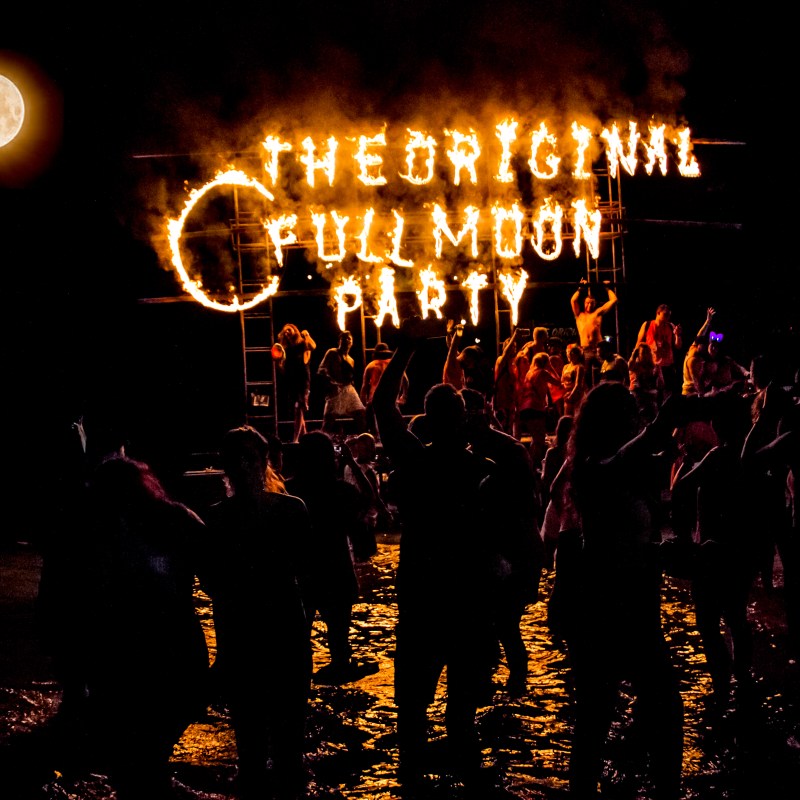
[The World Tour of Oopsies is an ongoing series of travel stories about my first decade of travel. During these adventures and misadventures, I had to unlearn many things I thought I knew about life. Welcome to my miseducation.]
Videos by TravelAwaits
Catch up on my World Tour of Oopsies:
- Chapter 13: The Recap
- Chapter 14: The Idol (Part II)
- Chapter 15: The Cow
- Chapter 16: The Riots
- Chapter 17: The Museum (Part I)
- Chapter 18: The End of the World
Part I / Vacation
Following an emotionally intense vacation in Vietnam (see: ch. 17 and ch. 18), it was time to unwind on the beaches of Thailand. My partner and I left Hanoi to fly to Surat Thani, a small city on Thailand’s lower peninsula. From there, we took a short ferry ride to the island of Koh Samui.
The year was 2012, meaning Koh Samui was a relatively new backpacker stop. It’s the largest of three popular islands, including Koh Phangan and Koh Tao. Koh Tao is renowned for its diving and snorkeling, while Koh Phangan is known for something else.
It’s wild, all-night-long full moon parties.
These parties, which are held on full moons and have since become a well-known quantity in Thai travel circles, are pure saturnalia. Alcoholic beverages are sold in miniature plastic buckets, and they’re made strong. Effigies are lit on fire and left burning. Special milkshakes are sold that are trippy, to put it lightly.
And the whole shebang takes place on a tropical beach under the light of the full moon—which you might not notice with all that neon.
Back in 2012, these parties were like a cult badge of experience for younger backpackers.
And my partner and I were in the right place for not just a full moon party on Koh Phangan, but a New Year’s version. We met up with two friends in Koh Samui, booked ferry tickets to make it to Koh Phangan, and waited for the big night.
Part II / The big night
When we took the ferry from Koh Samui to Koh Phangan, it was still light out. That gave us the chance to find the beach where the party would be hosted. We set up shop in a bar overlooking the beach, then watched tourists pour in from the streets. What started with a few hundred was, suddenly, thousands of people.
Today, full moon parties have plenty of neon exhibits, places to sit and hang out, and otherwise highly photographable setups. Back when I went to the full moon party on Koh Phangan, there was more fire than neon. Like I mentioned, effigies were burned, including a large sign celebrating the holiday—and tourists were climbing it.
The tide also came up at one point. Again, there wasn’t an array of neon lights, and many partiers were wading waist-deep as they shouted conversations and made new friends. I remember lighting a few lanterns as well, and sending them into the night sky with strangers.
I drank from a mini plastic bucket and also had one of those special milkshakes. I watched people jump through a rope that was on fire. I remember looking around and thinking that Dionysus would approve wholeheartedly of the party reeling around me.
Then, eventually, the night ended for me and my friends. We were tired, and the party started to get that feeling that nothing good would come next. (I think we all know the feeling of the good times ending.)
So, we wandered back to the other side of the island, which was layered in shadows under the night sky, and bargained for a boat ride back to Koh Samui.
Part III / Impressions
I was two years into earning my Global Studies degree when I wound up at the full moon party on Koh Phangan. One topic that we studied was foreign investment and the cultural and social impacts of tourism. In less than a year, I would return to Thailand to study that subject in-depth in Chiang Mai.
It was hard to leave my undergraduate degree at the door, so to speak. It was hard not to study the full moon party—almost everyone in attendance was a foreign tourist. It was hard to wonder about what those parties meant for the tiny island where they took place—the people, their temples, their homes, and their beaches.
It was the first time I hated tourism, to be blunt. It was the first time I questioned where I stood in terms of being a tourist, a student, and someone interested in cross-cultural experiences.
Coupled with my museum visit in Ho Chi Minh City, I started to get the impression that I didn’t have a clear view of myself as a Westerner, and that my desire to know the world might be more of a commentary on me than anything else.
